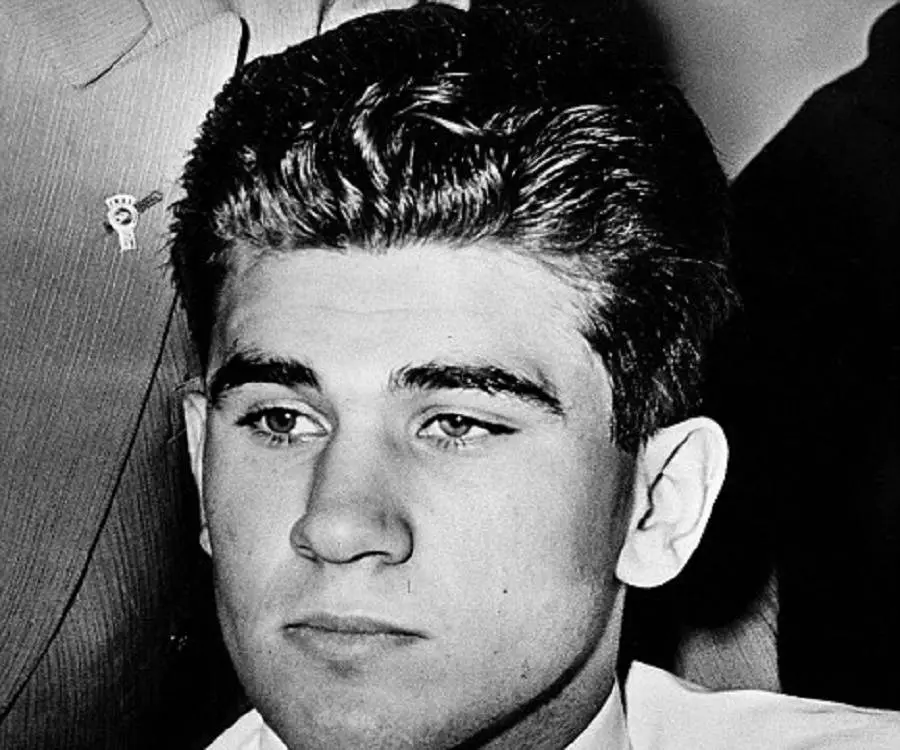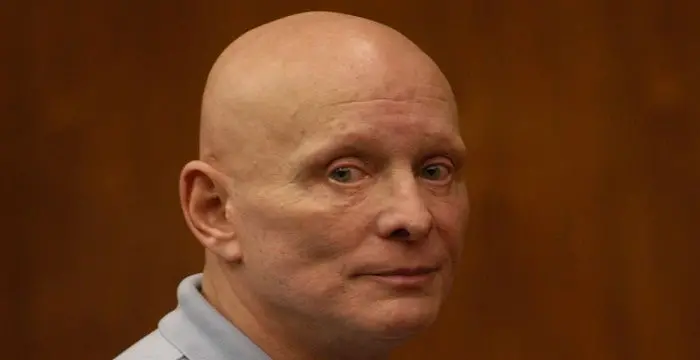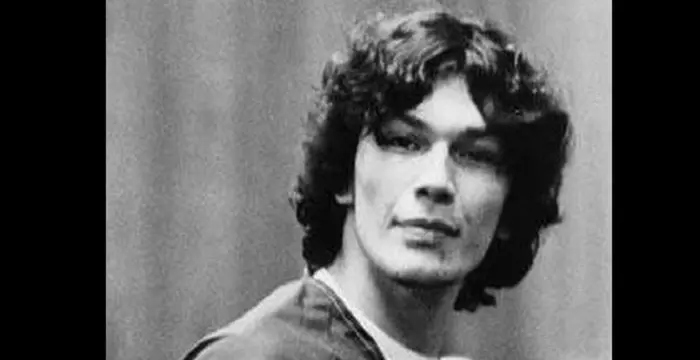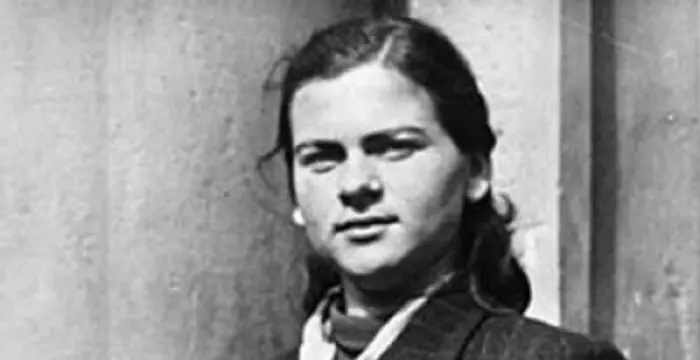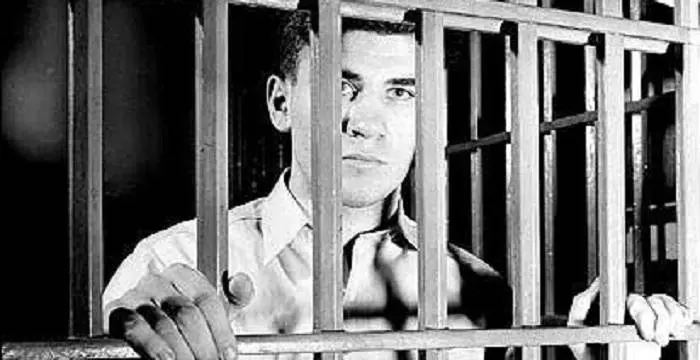
William Heirens - Serial Killers, Timeline and Family
William Heirens's Personal Details
William Heirens, also known as the Lipstick Killer, was a serial killer from America
| Information | Detail |
|---|---|
| Birthday | November 15, 1928 |
| Died on | March 5, 2012 |
| Nationality | American |
| Famous | Criminals, Serial Killers, Murderers |
| City/State | Illinois |
| Known as | William George Heirens, Lipstick Killer |
| Universities |
|
| Birth Place | Evanston, Illinois |
| Height | 175 |
| Gender | Male |
| Father | George Heirens |
| Mother | Margaret Heirens |
| Sun Sign | Scorpio |
| Born in | Evanston, Illinois |
| Famous as | Serial Killer |
| Died at Age | 83 |
// Famous Serial Killers
Edmund Kemper
Edmund Kemper is a convicted serial killer from America who murdered ten people. Check out this biography to know about his childhood, life, crimes and other facts about him.
Aileen Wuornos
Aileen Wuornos was a serial killer who was sentenced to death for killing seven men in Florida. This biography of Aileen Wuornos provides detailed information about her childhood, life, crimes & timeline.
Karla Homolka
Karla Homolka is one of Canada’s most infamous female serial killers. Check out this biography to know more about her childhood, family, personal life, crimes committed, etc.
William Heirens's photo
Who is William Heirens?
William George Heirens, also known as the Lipstick Killer, was a serial killer from America. He was convicted in 1946 after he confessed to murdering three people between June 1945 and January 1946. He got the nickname for the notorious message scribbled in lipstick at the crime scene. Raised in an impoverished, dysfunctional family, Heirens began committing crimes when he was still a child. However, he hoarded all his loot, never selling any of them. After his arrest, the stolen items were recovered from an unused shed on the roof of a building near his house. In the next two years, he was sent to two different Roman Catholic youth detention centres. Despite his criminal activities, Heirens thrived in his academic life, excelling in all of his subjects. He was accepted in the University of Chicago’s special learning program. But he relapsed to being a serial burglar which eventually led to the first murder in June 1945. After his arrest, he was tortured and injected with sodium pentothal or as it is colloquially called, the “truth serum”. He eventually confessed and was sentenced to life imprisonment. He later recanted his confessions, stating that they were given under duress caused by police brutality and coercive interrogation. Heirens died in prison at the age of 83.
// Famous Murderers
Sammy Gravano
Salvatore ‘Sammy the Bull’ Gravano is a criminal, best known as the underboss of the notorious Gambino family. This biography profiles his childhood, family, criminal activities etc.
Aileen Wuornos
Aileen Wuornos was a serial killer who was sentenced to death for killing seven men in Florida. This biography of Aileen Wuornos provides detailed information about her childhood, life, crimes & timeline.
Richard Ramirez
Richard Ramirez was an American serial killer and rapist dubbed as the “Night Stalker”. This biography of Richard Ramirez provides detailed information about his childhood, life, achievements, works & timeline.
Childhood & Early Life
William Heirens was born on November 15, 1928, in Evanston, Illinois to George and Margaret Heirens. His paternal grandparents were Luxembourgish immigrants. Growing up in the 1930s Chicago, he was well familiar with poverty and crime. His home did not provide a refuge either. His parents argued endlessly and to avoid listening to it, he would often leave the house and roam around the neighbourhood.
It was during these wanderings that he began to steal. He would later state that his early crimes were mostly for fun and to relieve tension. At 13, he was arrested for the first time after police caught him with a loaded gun. The authorities searched the Heirens house, finding a considerable amount of stolen weapons in an unused shed on the roof of a building in the neighbourhood. As he never sold the stolen goods, the rest of the loot was discovered there as well.
He pleaded guilty to 11 counts of burglary charges and spent the next few months at the Gibault School for wayward boys. Soon after, he was arrested a second time for theft/larceny and was sent to St. Bede Academy, a youth correction facility operated by Benedictine monks, where he spent the next three years of his life. In the institution, he proved his academic merit by excelling in mathematics, biological science, and social science.
Seeing his impressive test scores, his teachers encouraged him to apply for the University of Chicago’s special learning program. He received his acceptance letter right before his release and at 16, he started his classes in the 1945 fall term.
In the beginning, he used to live at his parents’ house and commute to the university. But he realised it was not a sustainable option and relocated to the University’s Gates Hall. Heirens worked as an usher or as a docent at the university to support himself. Bright, intelligent, and handsome, Heirens soon became popular among both the students and professors. However, he returned to the life of crime, committing a series of burglaries in homes near the university.
The Killings
The three murders that Heirens confessed to, and was later convicted of, were of 43-year-old Josephine Ross, 33-year-old Frances Brown, and six-year-old Suzanne Degnan.
Ross’ body was discovered on June 5, 1945, in her apartment at 4108 North Kenmore Avenue, Chicago. She had multiple stab wounds on her torso and her head was wrapped in a dress. The investigators suspected that she had accidentally confronted an intruder, who, on being surprised by her presence, had ended up killing her. They found dark hair in the clutches of her hand and concluded that she had struggled with her assailant before her death.
Ross’ then fiancé, former husbands, and boyfriends all had alibis. The police began searching for a dark-haired man who had been wandering in the area but could not locate him.
Brown was found dead on December 10, 1945, in her apartment at 3941 North Pine Grove Avenue, Chicago. She had a knife lodged in her neck and a bullet wound on her head. There was a message written in lipstick on a wall of the apartment. It read, “For heavens / Sake catch me / Before I kill more / I cannot control myself.”
On January 7, 1946, Degnan’s family realised that six-year-old Suzanne was missing from her first-floor’s bedroom at 5943 North Kenmore Avenue, Edgewater, Chicago. The investigators found a ransom note with the following written on it, “GeI $20,000 Reddy & wAITe foR WoRd. do NoT NoTify FBI oR Police. Bills IN 5's & 10's”. On the back of the note, there was an instruction, “BuRN This FoR heR SafTY”.
Degnan’s father was a senior Office of Price Administration (OPA) executive and in the mid-1940s, the organization was considering the extension of rationing to dairy products, infuriating the meatpackers who were on a strike at the time. Several other executives had already received threats against their children.
Edward Kelly, the then Mayor of Chicago received a note that read, “This is to tell you how sorry I am not to not get ole Degnan instead of his girl. Roosevelt and the OPA made their own laws. Why shouldn't I and a lot more?” The authorities initially thought that one of the meatpackers had kidnapped the girl.
The authorities received an anonymous phone call that told them to look in the sewers near the Degnan home. Following the instruction, police found the disembodied head of the girl in a storm-drain a block away from her home. The rest of her body parts were gradually discovered, with each part found in the sewer located further from her house than the last.
The case caught the attention of both the media and the public. There were several suspects, including a 65-year-old janitor named Hector Verburgh, and a recently-discharged marine named Sidney Sherman. Both Verburgh and Sherman were eventually cleared with the former successfully suing the Chicago Police Department for the torture he had been put through during his interrogation.
There were also two significant confessions. Vincent Costello, a local teenager, confessed that he had killed the girl and made calls to the Degnan home at the day of the incident, demanding ransom. However, he later revealed that he had made the calls after overhearing police officers discussing the case. He had nothing to do with the murder.
The second confession came from Richard Russell Thomas, a nurse who had been once suspected of molesting a child. He readily told the police that he had murdered the girl. But by then, there was a new suspect that the authorities were interested in. Heirens had been apprehended by the police while he was trying to flee a burglary scene. He had a gun and allegedly pointed it at one of his pursuers. Thomas later recanted his confession, but the media was already focused on Heirens.
Arrest & Interrogation
After his arrest on June 26, 1946, Heirens was interrogated rigorously. He later claimed that he was questioned for six days straight, was regularly beaten, and not given any food or drink. Dr. Haines and Dr. Grinker, psychologists with the police, administered sodium pentothal to him without a warrant or an explicit consent from either Heirens or his parents.
In the next three hours, according to the authorities, Heirens talked of an alternate personality who he called “George.” He reportedly said that it was George who had committed the murders.
He never gave George’s last name to the police. When asked, he stated that he could not remember and that it was “a murmuring name”. The authorities presumed it was “Murman”; the media sensationalised it as “Murder Man”. Later, in 1952, Dr Grinker would state that Heirens had never implicated himself in any of the murders.
He was administered lumber puncture without anaesthesia on the fifth day since his arrest. They had to reschedule his polygraph test after concluding that he was in too much pain. When he did undergo the test, the results were inconclusive.
During this period, the press played an instrumental role in controlling public opinion on Heirens, even allegedly affecting the investigation itself. George Wright, a staff reporter with Chicago Tribune wrote an article on the murders on July 16, 1946. He conjured up details and cited questionable sources to blame Heirens for the three murders and reported that he had already confessed. Soon the rest of the news outlets in Chicago were convinced that Heirens was the murderer.
His defence team was convinced that he was guilty. So when the prosecutor offered him a plea bargain, which would save him from execution if he confessed to the crimes, they began pressuring him to accept the deal. Thus 17-year-old Heirens and his parents signed a confession. While the initial deal was for one life term with a few minor charges, after Heirens appeared uncooperative at a news conference, it was extended to three life terms.
One of the hard evidences gathered during the investigation was a smudged fingerprint that the authorities at first stated did not match Heirens’, but that statement was eventually retracted and it was confirmed that it did belong to Heirens. A knife, which he admitted of using to cut up Degnan and throwing it on the subway track near the scene of the murder, was also discovered.
Trial, Conviction & Sentencing
Following his arrest, his parents and younger brother changed their last name to Hill. On August 7, 1946, Heirens confessed to the murders before the court. Prompted by the prosecutors, Heirens re-enacted his crime in the Degnan home.
On the night of 4 September, he tried to commit suicide but was discovered by the guards. He later revealed that despair had led him to attempt suicide.
He was sentenced to three life terms. When asked by Sheriff Michael Mulcahy if the girl had suffered, Heirens replied that he did not know; he had not murdered her. He further requested Mulcahy to tell the girl’s father to take care of his other daughter as the killer was still out there.
Life in Prison & Death
Immediately after his sentencing, William Heirens recanted his confession. He was housed at Stateville Prison in Joliet, Illinois till 1975 and then moved to the minimum-security Vienna Correctional Center in Vienna, Illinois.
In 1988, he requested to be transferred to the Dixon Correctional Center minimum security prison in Dixon, Illinois. Throughout his life, he continued his unsuccessful efforts to gain clemency.
He died on March 5, 2012 due complications caused by diabetes , at the University of Illinois Medical Center.
// Famous Criminals
Edmund Kemper
Edmund Kemper is a convicted serial killer from America who murdered ten people. Check out this biography to know about his childhood, life, crimes and other facts about him.
Irma Grese
Irma Grese was a notorious German Nazi concentration camp guard during the Second World War. This biography profiles her childhood, life, horrifying acts, death and other facts.
Mirtha Jung
Mirtha Jung is the ex-wife of former drug smuggler George Jung. Check out this biography to know about her childhood, family, personal life, crimes, etc.
William Heirens biography timelines
- // 15th Nov 1928William Heirens was born on November 15, 1928, in Evanston, Illinois to George and Margaret Heirens. His paternal grandparents were Luxembourgish immigrants. Growing up in the 1930s Chicago, he was well familiar with poverty and crime. His home did not provide a refuge either. His parents argued endlessly and to avoid listening to it, he would often leave the house and roam around the neighbourhood.
- // 1945Seeing his impressive test scores, his teachers encouraged him to apply for the University of Chicago’s special learning program. He received his acceptance letter right before his release and at 16, he started his classes in the 1945 fall term.
- // 5th Jun 1945Ross’ body was discovered on June 5, 1945, in her apartment at 4108 North Kenmore Avenue, Chicago. She had multiple stab wounds on her torso and her head was wrapped in a dress. The investigators suspected that she had accidentally confronted an intruder, who, on being surprised by her presence, had ended up killing her. They found dark hair in the clutches of her hand and concluded that she had struggled with her assailant before her death.
- // 10th Dec 1945Brown was found dead on December 10, 1945, in her apartment at 3941 North Pine Grove Avenue, Chicago. She had a knife lodged in her neck and a bullet wound on her head. There was a message written in lipstick on a wall of the apartment. It read, “For heavens / Sake catch me / Before I kill more / I cannot control myself.”
- // 7th Jan 1946On January 7, 1946, Degnan’s family realised that six-year-old Suzanne was missing from her first-floor’s bedroom at 5943 North Kenmore Avenue, Edgewater, Chicago. The investigators found a ransom note with the following written on it, “GeI $20,000 Reddy & wAITe foR WoRd. do NoT NoTify FBI oR Police. Bills IN 5's & 10's”. On the back of the note, there was an instruction, “BuRN This FoR heR SafTY”.
- // 26th Jun 1946After his arrest on June 26, 1946, Heirens was interrogated rigorously. He later claimed that he was questioned for six days straight, was regularly beaten, and not given any food or drink. Dr. Haines and Dr. Grinker, psychologists with the police, administered sodium pentothal to him without a warrant or an explicit consent from either Heirens or his parents.
- // 16th Jul 1946During this period, the press played an instrumental role in controlling public opinion on Heirens, even allegedly affecting the investigation itself. George Wright, a staff reporter with Chicago Tribune wrote an article on the murders on July 16, 1946. He conjured up details and cited questionable sources to blame Heirens for the three murders and reported that he had already confessed. Soon the rest of the news outlets in Chicago were convinced that Heirens was the murderer.
- // 7th Aug 1946Following his arrest, his parents and younger brother changed their last name to Hill. On August 7, 1946, Heirens confessed to the murders before the court. Prompted by the prosecutors, Heirens re-enacted his crime in the Degnan home.
- // 1952He never gave George’s last name to the police. When asked, he stated that he could not remember and that it was “a murmuring name”. The authorities presumed it was “Murman”; the media sensationalised it as “Murder Man”. Later, in 1952, Dr Grinker would state that Heirens had never implicated himself in any of the murders.
- // 1975Immediately after his sentencing, William Heirens recanted his confession. He was housed at Stateville Prison in Joliet, Illinois till 1975 and then moved to the minimum-security Vienna Correctional Center in Vienna, Illinois.
- // 1988In 1988, he requested to be transferred to the Dixon Correctional Center minimum security prison in Dixon, Illinois. Throughout his life, he continued his unsuccessful efforts to gain clemency.
- // 5th Mar 2012He died on March 5, 2012 due complications caused by diabetes , at the University of Illinois Medical Center.
// Famous Illinois peoples
Domo Wilson
Check out all that you wanted to know about Domo Wilson, the famous American Vlogger & YouTube Personality; her birthday, her family and personal life, fun trivia facts and more.
Nia Kay
Nia Kay is a Rapper and social media star. Let’s have a look at her family and personal life including age, net worth, and fun facts.
Marcheline Bertrand
Marcheline Bertrand was an American actress and humanitarian worker, best known as mother of Angelina Jolie. Check out this biography to know about her childhood, family life and achievements.
Jessy Schram
Jessy Schram is an American actress best known for her role in the series ‘Falling Skies.’ Check out this biography to know about her childhood, family life, achievements, and fun facts about her.
Kaylyn Slevin
Kaylyn Slevin is an American actress, dancer, model, and social media influencer. Check out this biography to know about her childhood, family, personal life, etc.
Mr. T
Mr. T (Lawrence Tureaud) is an American actor and former pro-wrestler. This biography profiles his childhood, life, career, achievements and some interesting facts about him.
William Heirens's FAQ
What is William Heirens birthday?
William Heirens was born at 1928-11-15
When was William Heirens died?
William Heirens was died at 2012-03-05
Which age was William Heirens died?
William Heirens was died at age 83
Where is William Heirens's birth place?
William Heirens was born in Evanston, Illinois
What is William Heirens nationalities?
William Heirens's nationalities is American
What was William Heirens universities?
William Heirens studied at University of Chicago
How tall is William Heirens?
William Heirens's height is 175
Who is William Heirens's father?
William Heirens's father is George Heirens
Who is William Heirens's mother?
William Heirens's mother is Margaret Heirens
What is William Heirens's sun sign?
William Heirens is Scorpio
How famous is William Heirens?
William Heirens is famouse as Serial Killer





